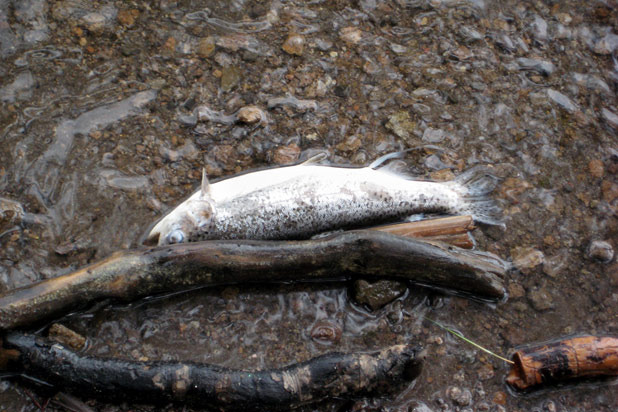12 Hidden Poisons In Your Food Slideshow
Diphenylamine (DPA), a fungicide, was found in 82.7 percent of the apples sampled by the USDA in the latest iteration of their Pesticide Data Program report. Apples are notorious for their pesticide content; the same analysis found more than 40 pesticides remaining on a typical apple after 10 seconds of washing. DPA can accumulate in the kidneys, liver, and bladder and cause damage in the long-term.
Thiabendazole
Thiabendazole is another fungicide that has been found in high concentrations by the USDA on apples. Their latest test yielded an 80.8 percent detection rate on a sample of nearly 750 apples. Thiabendazole is harmful to the nervous system and digestive system and can cause damage with long-term exposure.
Aldrin
This pesticide works against pests like termites, grasshoppers, rootworm (which affects corn), but it is also toxic to birds, fish, and people (5 grams is all that is needed to kill an adult male). Aldrin finds its way into meat and dairy products.
Chlordane
Not to incite paranoia, but it's in the air and it's everywhere. (The Mayans are coming for us anyway.) This chemical is used to deal with termite problems and is used on a wide variety of crops. It persists in the environment for a long time; its half-life (the time it takes for a substance to decay to half its original mass) is one year. It impacts the immune system and is a potential carcinogen. Chlordane is primarily airborne, however, and studies have found chlordane in homes in the United States and Japan.
DDT
Although the use of this chemical has been banned in the United States, it is still widely used as a treatment against mosquitoes carrying malaria in various countries. And just because it isn't sprayed on crops in this country anymore doesn't mean that we aren't still impacted by it. The patina of DDT residue has been found in areas as far-reaching as the Arctic, and the Stockholm Convention maintains that DDT "has been detected in food from all over the world."
Dieldrin
Aldrin, another pesticide, breaks down into this compound, dieldrin, as it decays. Dieldrin is a pesticide also used to control termite populations. In frogs, it causes birth defects even in low concentrations. It has been found commonly in pasteurized milk in the United States.
Endrin
Endrin is used on grain crops to help eliminate rodents. It does break down in the body, meaning it doesn't bind to fatty tissues like many of these other pesticides. However, it remains in the environment for a very long time; its half-life is 12 years. And it is lethal to fish.
Heptachlor
When used on crops, heptachlor helps control termite and grasshopper populations. It is also used to kill malaria-bearing mosquitoes. It is a potential carcinogen and has been detected in trace amounts in cattle in the United States and Australia.
Hexachlorobenzene
Hexachlorobenzene, or HCB for short, is a fungicide that was used initially on wheat, but today is found on all kinds of food. Eating HCB-treated grain has been associated with the development of painful skin conditions, colic, and a rare disorder called porphyria turcica. It has also been shown to pass through from mothers to newborn children and also into breast milk.
Mirex
Mirex is the fire ant killer. It's also useful against termites. Mirex is a potential carcinogen and is a resilient pesticide with a half-life of up to 10 years. Mirex finds its way into the food supply through meat and fish.
Toxaphene
Toxaphene is used to combat ticks and mites in cattle, sheep, and pigs and is also sprayed on fruits, grains, nuts, and vegetables. Studies on rats have shown it to be a potential carcinogen, and systemic exposure to fish has had lethal effects on reproduction.
Endosulfan
Added to the list of Persistent Organic Pollutants when the Stockholm Convention reconvened in 2009, endosulfan is a pesticide used to eliminate tsetse flies, parasites, and other pests from a variety of crops, most notably coffee, rice, sorghum, and soy. It has been in use since the 1950s. Argentina, Australia, Brazil, China, India, Mexico, Pakistan, and the United States are the top users of endosulfan and utilize approximately 15,000 tons of this chemical each year. Endosulfan is associated with birth defects, impaired mental function, and even death in farmers and villagers in close proximity who have been exposed in high concentrations.











